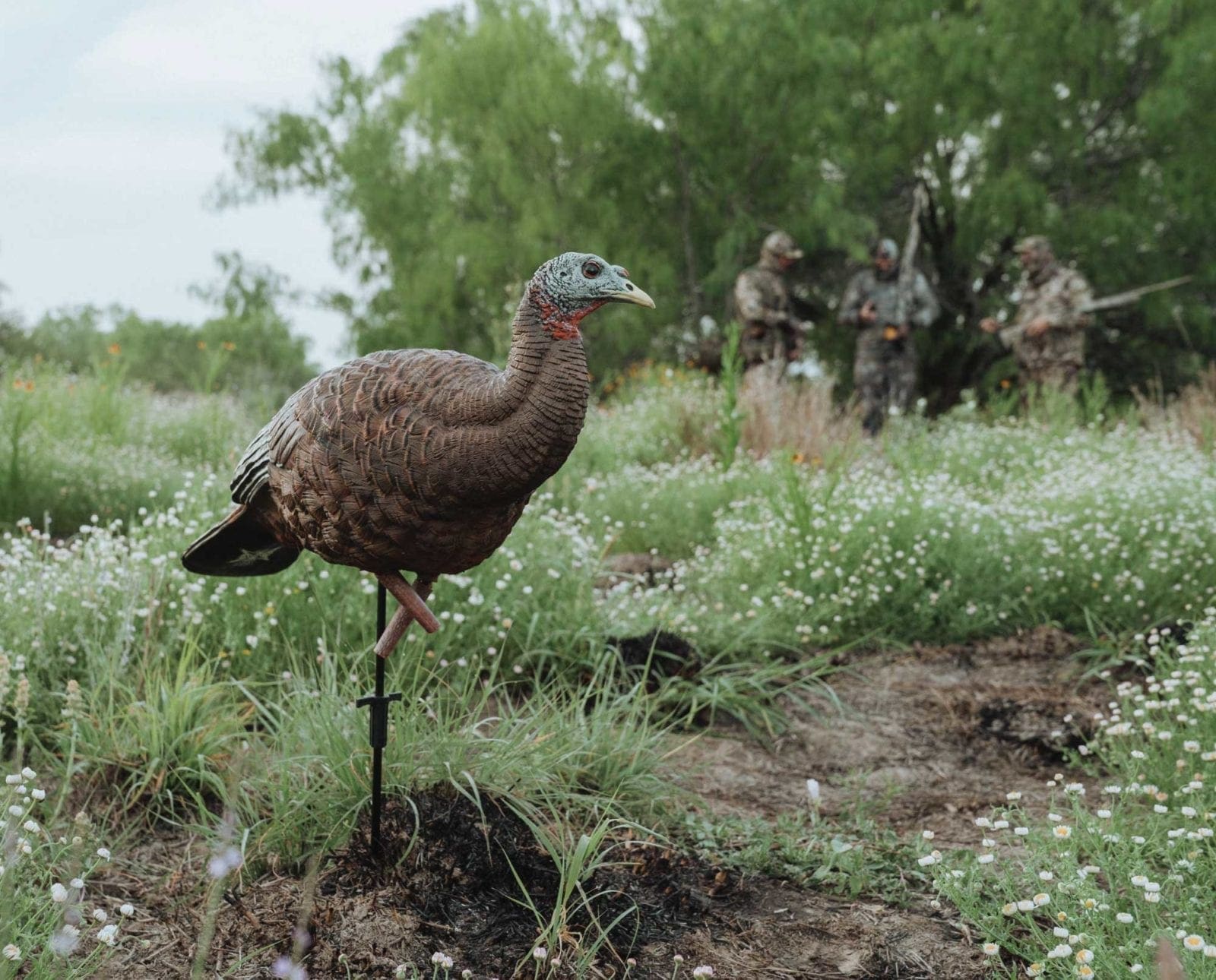Home » Turkey Hunting » Do Turkey Decoys Really Work?
Do Turkey Decoys Really Work?

Joel Nelson is a well-known turkey-hunting personality in the Midwest,…
A constructive look at when turkey decoys do and do not work
The simple answer is of course they do. Maybe a better way of putting it is to quote the movie Anchorman, “Sixty percent of the time it works every time.” For turkey decoys, that percentage varies depending on the duration of use and what time of the hunting season you’re using them. Let me explain.
It’s rare to find a turkey camp these days that doesn’t have at least a few decoys stashed away. The number one seminar questions I get are about decoys. Each year I’m presented with a full spread of inquiries on the whats, whens, wheres, hows and whys of decoy use. Most people are surprised when I say that I rarely use decoys unless I’m bowhunting. Still, there are good reasons and promising scenarios to drag them along, provided you use them appropriately including with ground blinds.
I’ll never forget the first time I hunted over a strutting tom decoy. I was set up in the bottom of an open, shallow draw that toms love coming to. It was to be the perfect bow setup, as I could shoot nearly all directions and anything in the “bowl” was within range. I couldn’t hunt until mid-morning, which was fine; I grew up here and knew that toms would be loafing within earshot on some nice oak flats all around me.
The response after my first string of yelps nearly scared me. A triple gobble, then another one 100 yards closer followed less than a minute later. Could it be the same bird? If it was, the thing must’ve heard the call and came right at me. Seconds later I saw him at about 50 yards heading down into the bottoms with me, only to recoil like he’d been gutshot before ever making it to the bottom. That bird’s demeanor went from fiery white and closing, to deathly afraid and side-stepping, as he circled my entire position at no closer than 50 steps, curiously gobbling the entire way. After a full 360 degree surveying of my position, he walked straight back to where he came from, gobbling the entire way.
It was an odd encounter, but certainly not the first time I’ve spooked birds with decoys. Early in my turkey hunting career, several birds of both sexes spooked on open-field setups with full sun and using an old, beat up hen that looked more like a foam finger from a sports event than a turkey. I eventually switched to some higher quality hens that did a far better job of tricking the eyes of an old tom, especially when I hid them a bit and didn’t plop them out in a plowed field. Today I rarely use them when gun hunting, unless sitting over a strut zone or hunting bigger groups of birds early out West.
When I’m using a gun, I’m more interested in fooling a turkey’s ears than his eyes. With a call, I can vary my cadence, direction of calling and volume to help him find my general location. On several occasions I’ve been able to steer a tom around obstacles that may have hung him up or make a gobbler think I was leaving just by turning my head and muting the call. I’ve also been able to attract a different tom coming from another direction simply by using my hand to “throw” the sound from a mouth call. With decoys, you can go from zero to made in next to no time; once a bird has his eyes locked on your decoys, the ball is completely in his court.
With a bow in hand, I think of decoys as nearly a requirement. Decoys can capture the attention of a tom while you’re doing your best to draw on him and release an arrow. Breeding hen with jake and tom combinations continue to be my favorites when hunting with a stick and string, but this is more true during later season when alfalfa, clover or shin-level grass can hide some of the stakes and other gadgetry.
That said, at least where I hunt, decoy effectiveness wanes as the season draws down. Early season birds tend to be more willing for several reasons. First and foremost, there’s more of them, as hunters have yet to pare down the flock through successive hunts. There’s also fewer recently educated birds in early season as there are in later months. Not to mention, early birds are often flocked-up, and they’re still figuring out competitive dominance situations. That plays to your favor when hunting over dekes early.
For the average turkey hunter that wields a shotgun, decoys can be a hindrance to you getting around quickly and quietly. Not only is your mobility affected by lugging around a bag of dekes, they’re also often loud and cumbersome. Worse yet, they can help a tom pinpoint your location and then use it against you. While turkeys are not known to be curious, the goal of any turkey hunting session should be to arouse interest via calling, then hide out in a pre-determined setup while the tom hunts YOU. Whether you call too loud or too long at the wrong time, or you drop a decoy too far out in the open, the effect it has on many toms is to hang them up. By their ears or eyes they know exactly where you are as they get close enough to show off, but then stay too far away for a shot.
I think the key for each hunter is to use decoys when they make sense and to use them well. Whether you love them, hate them, or fall somewhere in between, don’t rely on decoys alone to be a cure-all for turkey woes. Instead, dig deep into your bag of turkey tactics as you utilize them to complement your approach rather than be the highlight of it.
Joel Nelson is a well-known turkey-hunting personality in the Midwest, working for several hunting product manufacturers and call companies in the past 20 years. Joel has taken birds in more than a dozen states, killing himself or guiding hunters to hundreds of birds in the process. In his travels, he's competed and hunted with everyone from local turkey guides to NWTF Grand National Calling Champions. He shares his experience in the pages of Outdoor News, several online outdoors publications, and on his own blog site Joel Nelson Outdoors, where he invites folks to “Ask Me Anything.”



